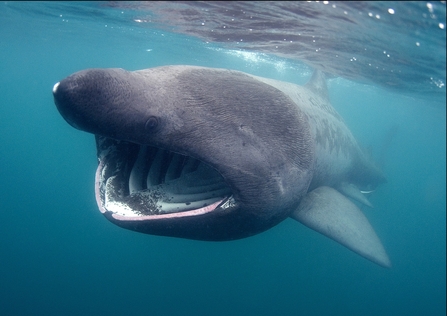
Basking shark often swim through the Irish Sea by JP Trenque
Smelt by Paul Naylor

Basking shark often swim through the Irish Sea by JP Trenque
Conservationists from around the Irish Sea are looking to turn a tide of inaction to ensure the Irish Sea and all its inhabitants are protected.
While 36 per cent of the Irish Sea is designated as a Marine Protected Area, only approximately five per cent has any management in place and less than 0.01 per cent is fully protected.
The Irish Sea is under significant and increasing pressure from climate change and activities like fishing, aquaculture, development, shipping, aggregates, military activity, recreational activity and pollution.
And while more than 15 million people live around the Irish Sea and many more visit for holidays, only a small percentage of them realise what wildlife lives there and just how important it is for biodiversity and the environment.
Conservationists representing six countries and a number of different organisations – Manx Wildlife Trust, North Wales Wildlife Trust, the North West Wildlife Trusts, Scottish Wildlife Trust, The Wildlife Trust of South and West Wales, Ulster Wildlife and Sustainable Water Network (Ireland) – have come together to press for action.
The Irish Sea region is already considered to be in a degraded state. The Irish Sea Network has produced a Review of the Irish Sea 2022 and has laid down their vision and calls to action to protect and improve the health of the Irish Sea.
Head of Marine at the North West Wildlife Trusts, Georgia de Jong Cleyndert says: “Working together is essential. Wildlife does not adhere to lines drawn on maps, so we need to think at an Irish Sea scale. Whilst there are some protection measures in place for the Irish Sea, management is weak.
“Millions of people around the Irish Sea rely on it for food, employment and wellbeing, but many overlook its role in fighting against climate change and its importance for wildlife – few know about the incredibly diverse habitats that support a huge amount of amazing wildlife – giant basking sharks, leatherback turtles, beautiful starfish and jellyfish, dolphins, porpoises, seal and sharks, as well as internationally important seabirds like Manx shearwater and guillemots”.
Without protection and proper management much of this wildlife faces an uncertain future - pollution, development and destruction of habitat could lead to a severe decline in biodiversity.
The Irish Sea will also be affected by global warming. Blue carbon is the absorption and storage of atmospheric carbon in the marine environment. Oceans store 20-35 per cent of human-made carbon emissions. Blue carbon is stored in the Irish Sea in seagrass, saltmarsh, sediment, shellfish beds and reefs, intertidal sand and mud flats and brittlestar beds. Whilst intact marine ecosystems are effective at sequestering and storing carbon, when marine habitats are damaged they can’t retain as much carbon and may switch from being a carbon store to a carbon source.
Georgia de Jong Cleyndert continues: “We must ensure that damaging activities like dredging, development and damaging fishing practices are managed to ensure that vitally important areas for the environment are protected and we give space for nature’s recovery.
“If people living around the Irish Sea and those visiting realised just what amazing wildlife is in there and how important it is for the future of our children and grandchildren, they would want to support the work to protect and improve our forgotten sea.
“We are also calling on politicians and business leaders to work with us to make sure this is a sea where wildlife can flourish.”
Tom Burditt CEO of Lancashire Wildlife Trust said “We often describe the Irish Sea as the Forgotten Sea, because it gets less attention than other parts of the British and Irish coastline, and because despite millions of people living and holidaying along its shores, very few of us get to see and experience either the wealth of life living in it, or the damage being done to that special wildlife by inappropriate and unregulated activities. This new partnership, vision, and review is an important next step at addressing that. But it will only work if we now use it to work in partnership with the communities and businesses living and working on, in and alongside this fabulous marine ecosystem.”
The Irish Sea Network has a vision for “a healthy and resilient Irish Sea, enabled by collaborative, cross-national action; where marine wildlife and blue carbon habitats thrive, supporting multiple environmental, social and economic benefits”.
It believes that strategic and effective marine planning that takes an ecosystem-based approach with cross-national collaboration, would help to reduce the impact upon sensitive wildlife habitats and carbon stores.
Read the Irish Sea Network’s Vision Statement and 2022 Review.